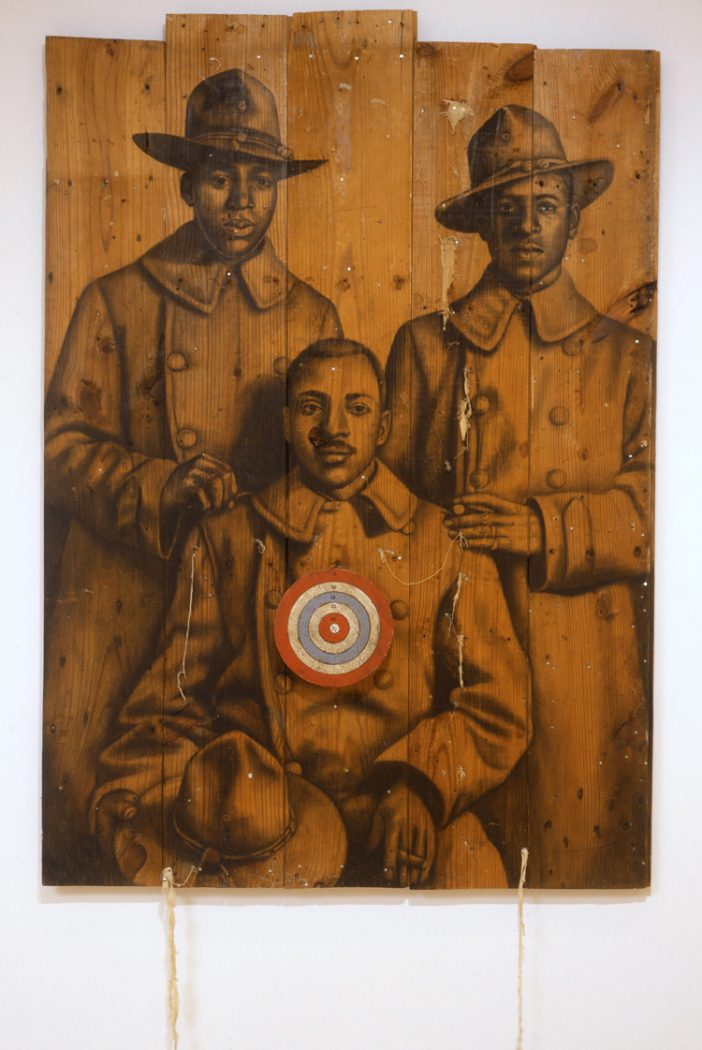
Whitfield Lovell, At Home and Abroad, 2008. Charcoal on wood and found objects, 65 x 45 x 3 1/2 in. Purchased in honor of the 100th Anniversary of the Muskegon Museum of Art through the Art Acquisition Fund, the 100th Anniversary Art Acquisition Fund, the support of the Alcoa Foundation, and the gift of Dr. Anita Herald. © Whitfield Lovell and DC Moore Gallery, New York
Whitfield Lovell‘s At Home and Abroad depicts three anonymous figures dressed in World War I-era US Army double-breasted wool greatcoats. The red, white, and blue target on the chest of the seated man is a recurring motif in Lovell’s work, as seen in Kin IV (One Last Thrill).
The deceptively simple form of the target in both works portends a harsher reality, one which Lovell has personally experienced (Lovell suffered the loss of his grandfather Eugene Glover, who was killed in a mugging in 1984): “Every target, every bulls-eye . . . holds a personal resonance for me . . . I am rarely thinking of, or reliving those losses . . . but rather using these as symbols for the losses of everyone, the violence we perpetrate upon our fellow human beings, be it physical or verbal, political or psychological. We are always, as a society, throwing darts, aiming bombs and missiles at one another and using people as target practice.”
The target, when paired with the image of these three dignified WWI African American soldiers, becomes charged with racial implications. While joining the patriots to defend freedom abroad, black soldiers were denied human rights in a segregated society at home.
Whitfield Lovell: The Kin Series and Related Works is on view through Jan. 8, 2017.

